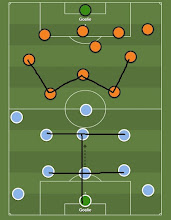The renovation of Helsinki Olympic
Stadium appeared to have cost more than expected.
The home of the Finland national
team, the largest stadium in the country, Helsinki Olympic Stadium, had just
been renovated and opened for public again in summer 2021 with a number of additional
facilities. However, the price for its overhaul turns out to be skyrocketing
compared to the previous plan.
Recently, it has been reported by
NAOF (National Audit Office of Finland) that the final price for such a project
has reached $ 410 million, whereas the previous estimation in 2016 was only
$218 million. In other countries, such an amount is normally sufficient for
building an entirely new one with a large capacity. Yet, the result of the
renovation project, apart from the new facilities, is barely different from the
previous condition. The capacity is still the same: 36,000 people, which is not
a big one. Its design tends to be a modest one as well. Nothing really stands
out in particular, although the Finns might argue on this issue since they do
focus on preserving its original historic outlook and structure.
Regarding the result of the audit,the city of Helsinki eventually released its official statement on the issue ofthe fluctuating construction market as one of the reasons, beside the extremelyhigh material and labour costs in Finland.
“Examples of such new factors
were the more extensive and demanding rock quarrying and reinforcement work,
the replacement of structures with moisture damage, as well as additional
concrete structure work both in the new and refurbishment segments.”
Unfortunately, the NAOF auditors do
not seem to be entirely satisfied with it. It is believed that there is an
issue of lack of discipline and transparency in relation to spending taxpayer
money, although there has been no official confirmation on it yet.
The History
Helsinki Olympic Stadium was erected
in 1934 and completed four years later. It was designed by Yrjö Lindegren and
Toivo Jäntti and became the hosting venue of the 1952 Olympic Games. Before the
2016 renovation, the stadium was revamped twice: from 1990 to 1994 and in
2004–2005. The most notable facilities after the latest overhaul are the
additional hospitality area, the indoor secondary running track hidden just
beneath the main track, the sprinters track, and other secondary sports
facilities under the stands.
This stadium, which holds concerts by
famous world artists more often than notable football matches, was selected to
be the host of the UEFA Super Cup 2022. It was held on August 10, 2022. The
UEFA Champions League and Europa League winners in the 2021/22 season, Real
Madrid and Eintracht Frankfurt, squared off again in the summit after 60 years.
Their last duel took place in the 1960 European Cup, the old name of the UEFA
Champions League. At that time, Los Blancos dismantled the German side 7-3.
The Recent Matches
In Helsinki 2022, the result remained
the same: a victory for Los Merengues in front of 31,024 spectators. They
picked up a 2-0 win over Oliver Glasner’s side, scoring one goal each in the
first and second halves. Austrian international David Alaba opened the scoring
in the 37th minute before Karim Benzema doubled their lead in the 65th
minute. It was Real Madrid’s fifth title and the fourth trophy for their boss, Carlo Ancelotti as a manager.
Meanwhile, the last game staged in
this stadium was the EURO 2024 qualifying round match between Finland and
Northern Ireland on November 17, 2023. Teemu Pukki and Co. hammered
their British opposition 4-0. Such a win helped Finland secure a berth in the
playoffs next March. They will be taking on Wales. Should they win, they have a
chance to host another decisive game against the winners of Poland and Estonia
to snatch one of the last spots in EURO 2024.


Comments
Post a Comment